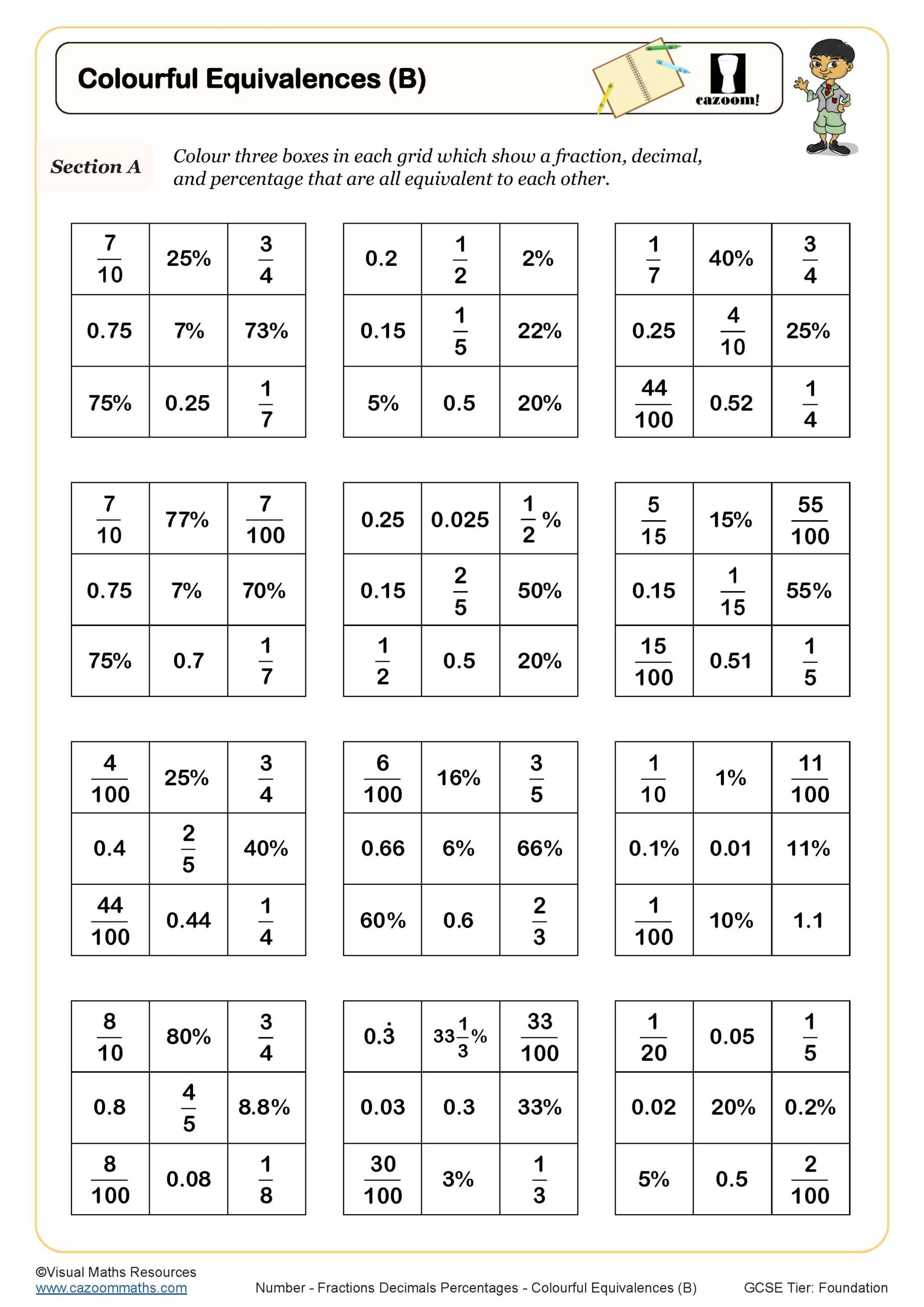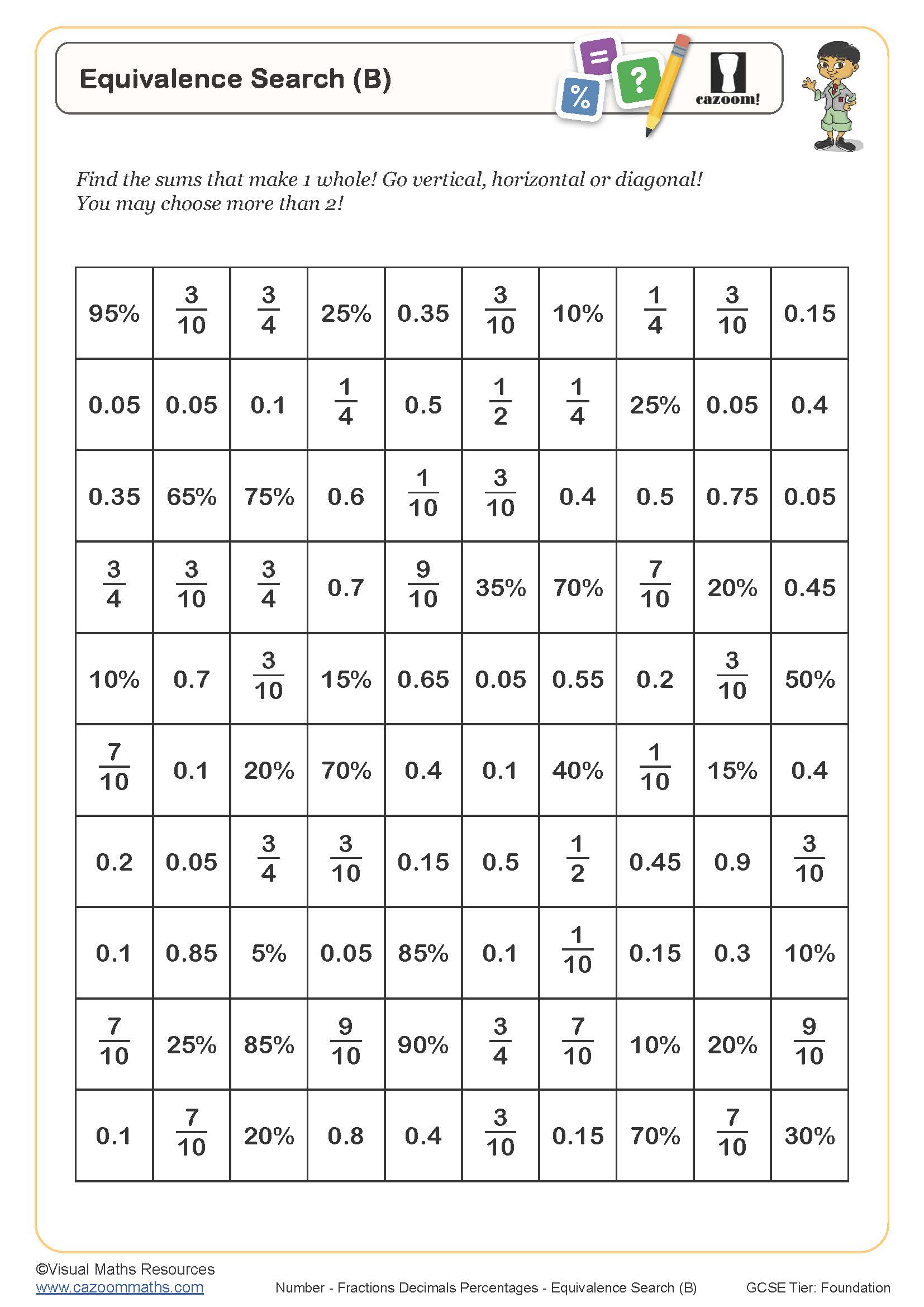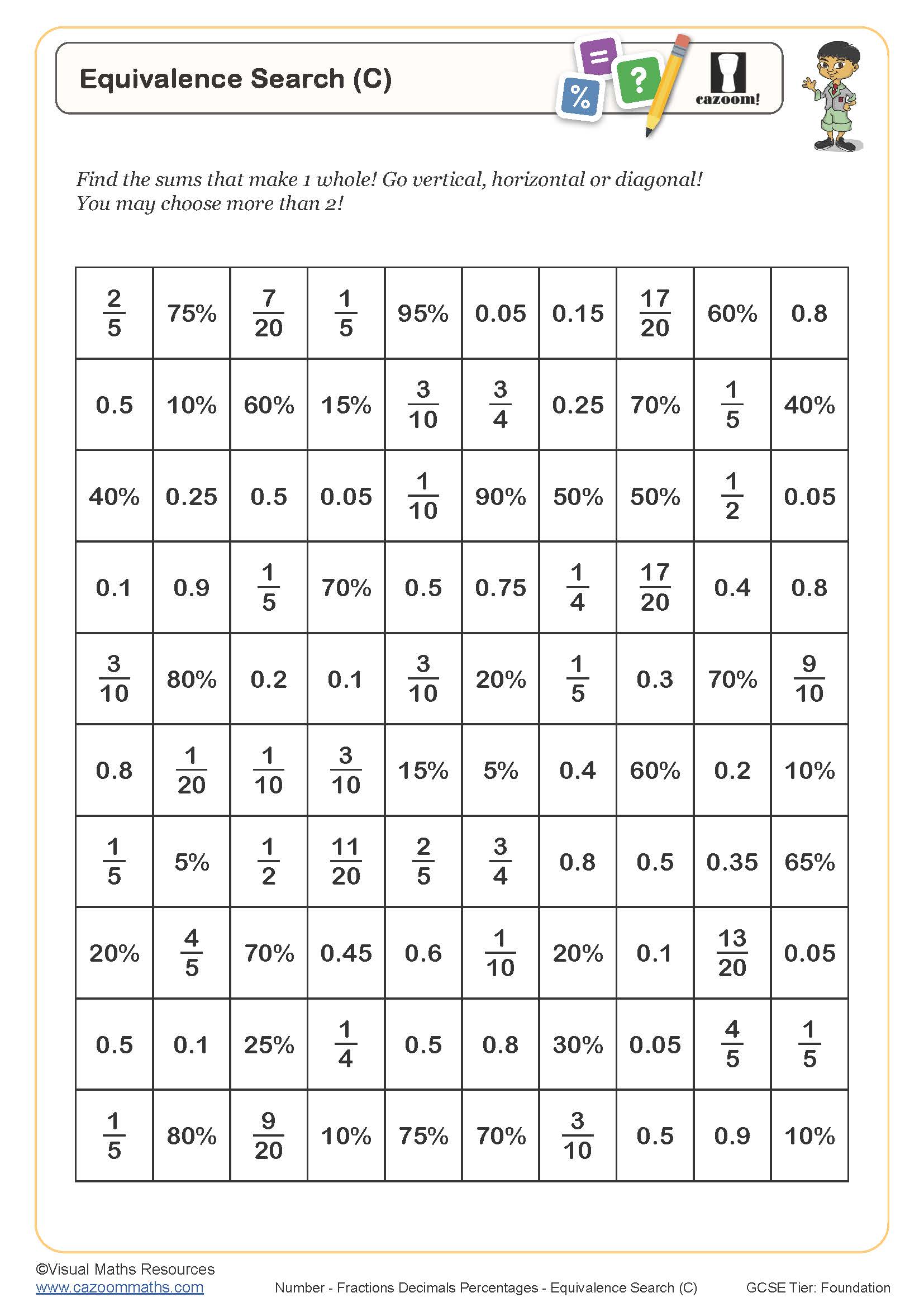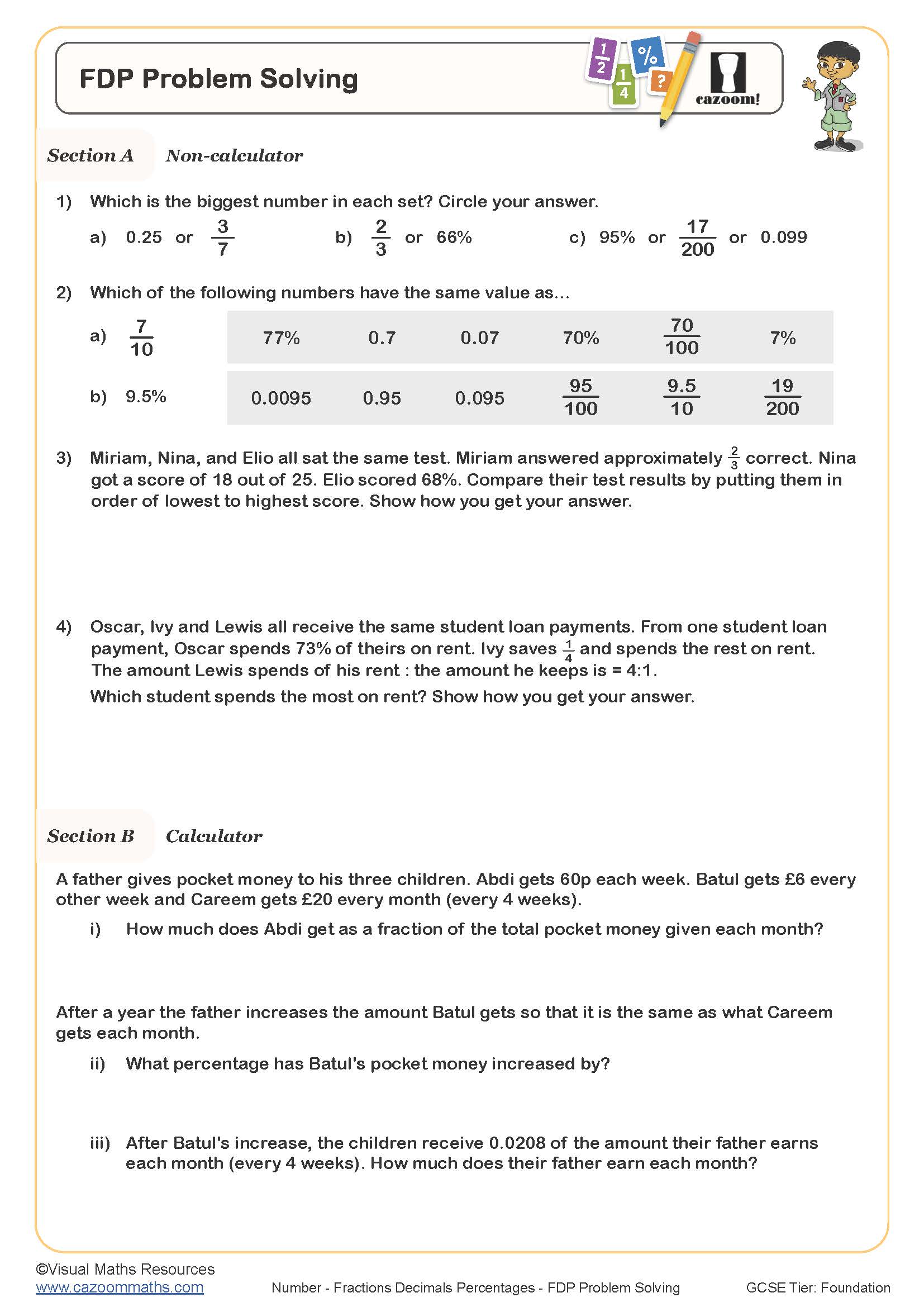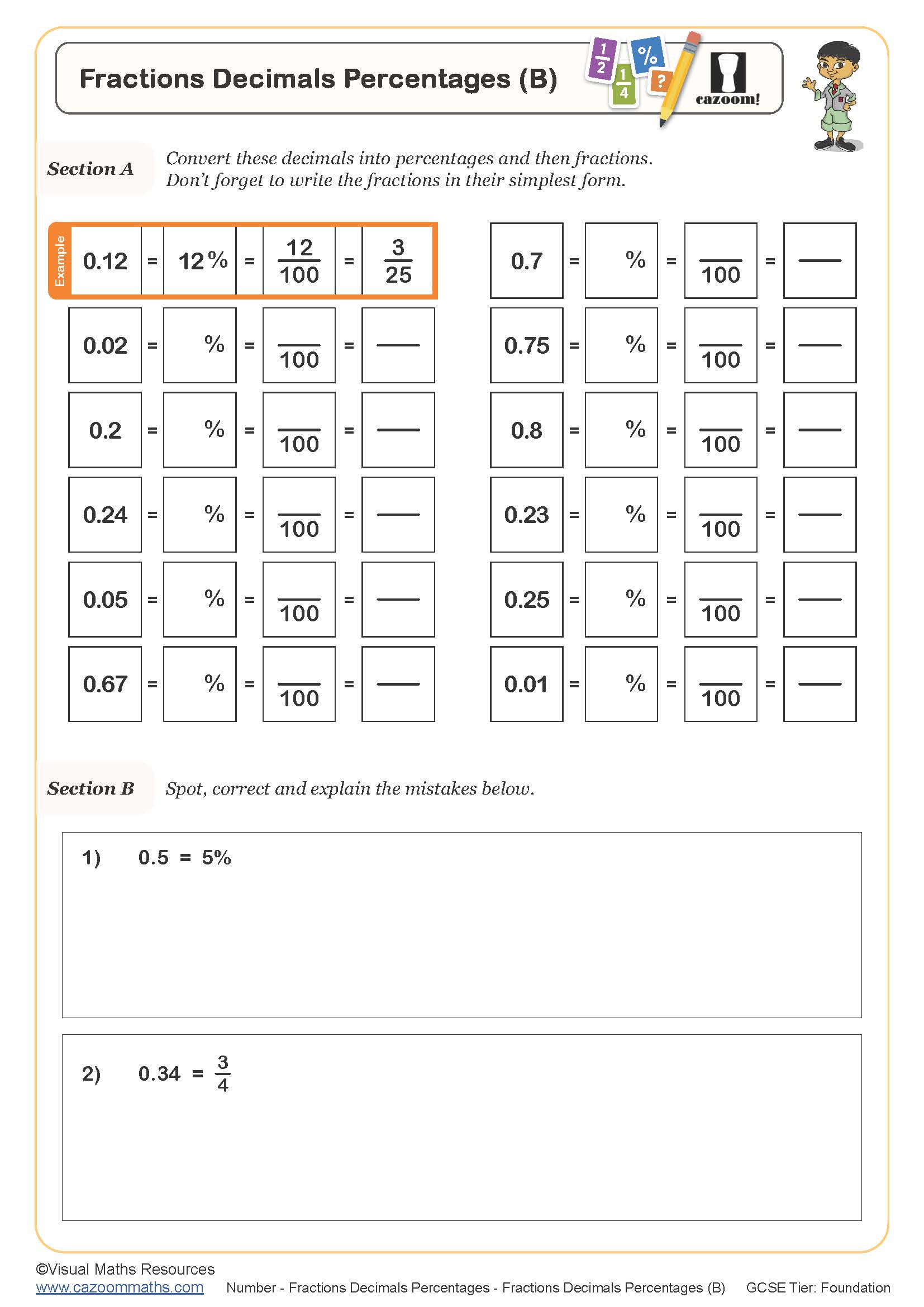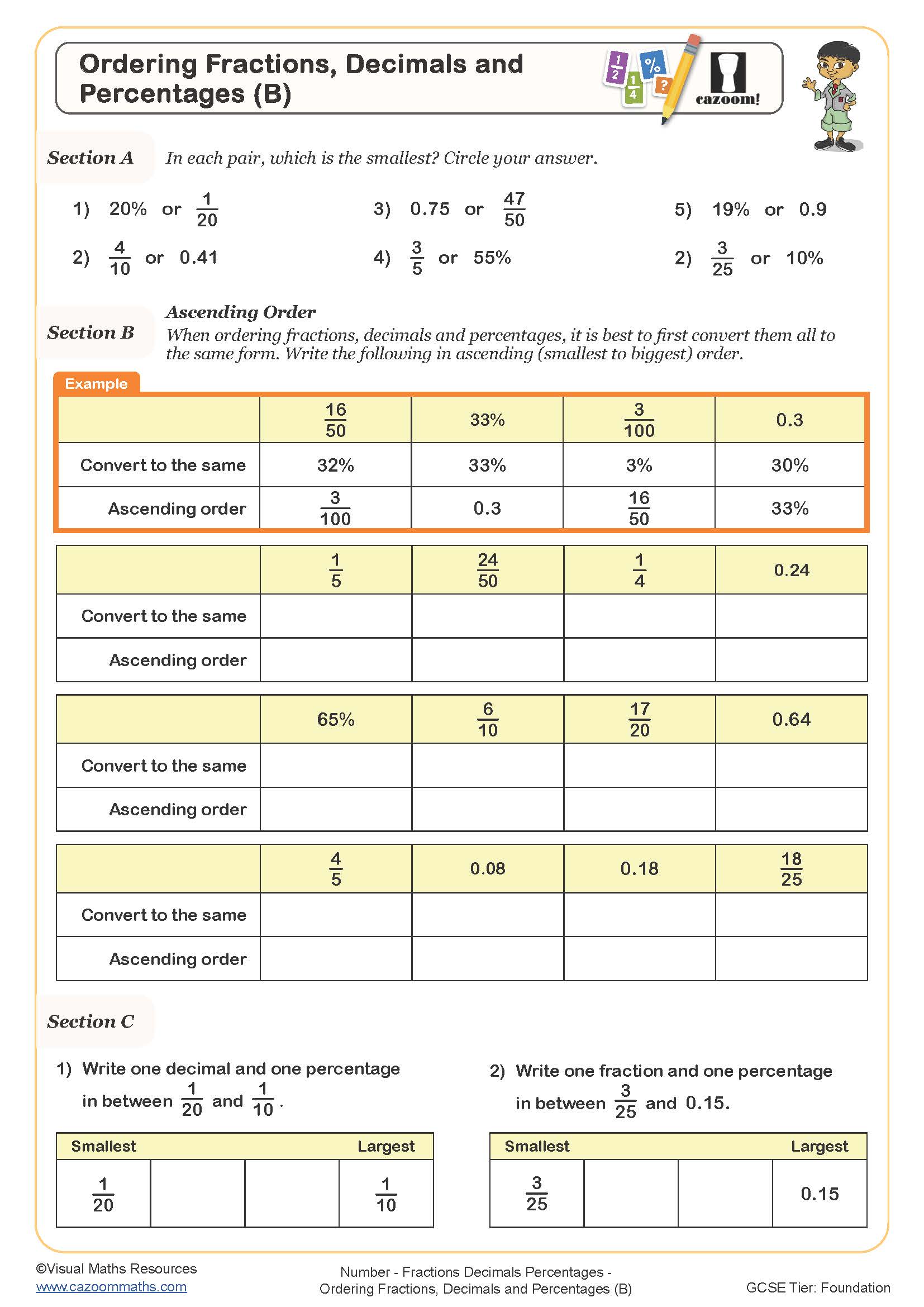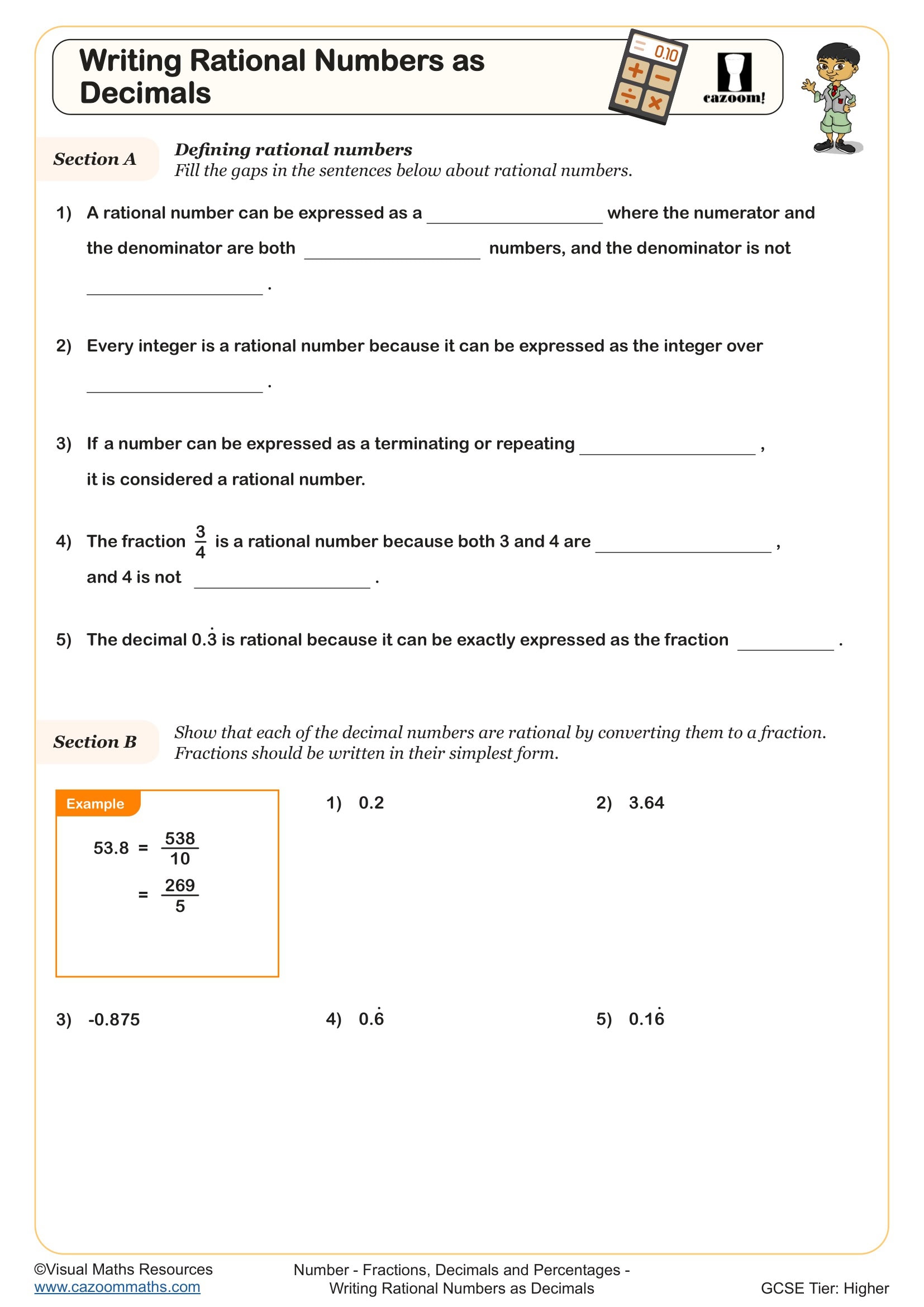Year 9 Fractions, Decimals and Percentages Worksheets
Improve Test Confidence With Our Printable PDF Year 9 FDP Worksheets
Converting fluently between fractions, decimals, and percentages unlocks advanced mathematical reasoning across the secondary curriculum. Year 9 students encounter rational numbers and recurring decimals for the first time as they move past basic equivalence concepts. Students who practice with different contexts on a regular basis will learn to identify the fundamental patterns which support proportional reasoning in science, technology and geography subjects. The systematic progression helps students develop automaticity, which enables them to solve multi-step problems without needing a calculator. The worksheets link procedural understanding to conceptual knowledge by using specific question types. Students who learn these conversions at an early stage will find algebra, statistics and probability topics easier to understand.
Specific learning benefits include:
• Master the equivalence between number forms
• Develops proportional reasoning skills
• Strengthens mental calculation strategies
• The system becomes better at handling complex problems which need multiple steps for resolution.
• Enhances mathematical communication abilities
• Supports cross-curricular applications
• The material lays the foundation for the upcoming ratio-related content.
Topic Map: What Our KS3 Fractions, Decimals and Percentages Worksheets Build Step by Step
These resources progress systematically from concrete visual representations through pictorial models to abstract symbolic manipulation, ensuring deep conceptual understanding. Worked solutions accompany every problem, revealing the mathematical thinking behind each conversion method. Students encounter increasingly sophisticated contexts requiring flexible decision-making about which number form to use.
The worksheets in this collection include:
• Colourful Equivalences (B) — visual matching activities connecting equivalent fractions, decimals and percentages
• Equivalence Search (B) — finding missing values in equivalence chains and number patterns
• Equivalence Search (C) — advanced pattern recognition with non-standard fractions and recurring decimals
• Fractions, Decimals, Percentages (B) — systematic conversion practice between all three number forms
• Ordering Fractions, Decimals and Percentages (B) — comparing and sequencing mixed number representations accurately
• FDP Problem Solving — real-world contexts requiring strategic conversion choices and reasoning
• Fractions, Decimals, Percentages (C) — challenging conversions involving improper fractions and complex decimals
• Quick Conversions (B) — rapid mental calculation techniques for common equivalences
• Writing Rational Numbers as Decimals — converting fractions to terminating and recurring decimal forms
Support Your Child’s Learning With Cazoom Maths Year 9 FDP Worksheets
Cazoom Maths worksheets address diverse learning needs through carefully differentiated question sets that balance accessibility with appropriate challenge. Teachers who work under time constraints find the complete answer sheets with method marks and different solution approaches to be highly valuable. The worksheets focus on particular student errors which researchers found during their classroom observations to create targeted intervention activities. The design of the text maintains a clear structure which guides readers through the content while keeping their mental effort low so they can concentrate on mathematical concepts instead of reading instructions. The department achieves budget cost reduction through eliminating unneeded graphics, which produces simple printed materials. The uniform structure across subjects enables students to study independently, while teachers can create effective work assignments.
Why Real-Life Maths Starts With Year 9 Fractions, Decimals and Percentages Skills
The analysis of fraction-decimal-percentage connections enables students to handle standard numerical data which they encounter every day. The fundamental competencies serve as the foundation to grasp financial literacy and data interpretation across various contexts. For example-
• The assessment of product value and the establishment of discounts occur within the operational framework of retail businesses.
• Sports statistics, along with performance metrics, must be thoroughly understood for accurate analysis.
• Interpreting nutritional information and recipe scaling
• Achieving personal budget management and saving targets requires a structured approach.
• The research evaluates scientific evidence and experimental findings.
• Design projects require accurate measurement and distance calculation for their completion.
• The assessment of probability in games and risk evaluation processes.
• International unit conversions need to be handled correctly.
